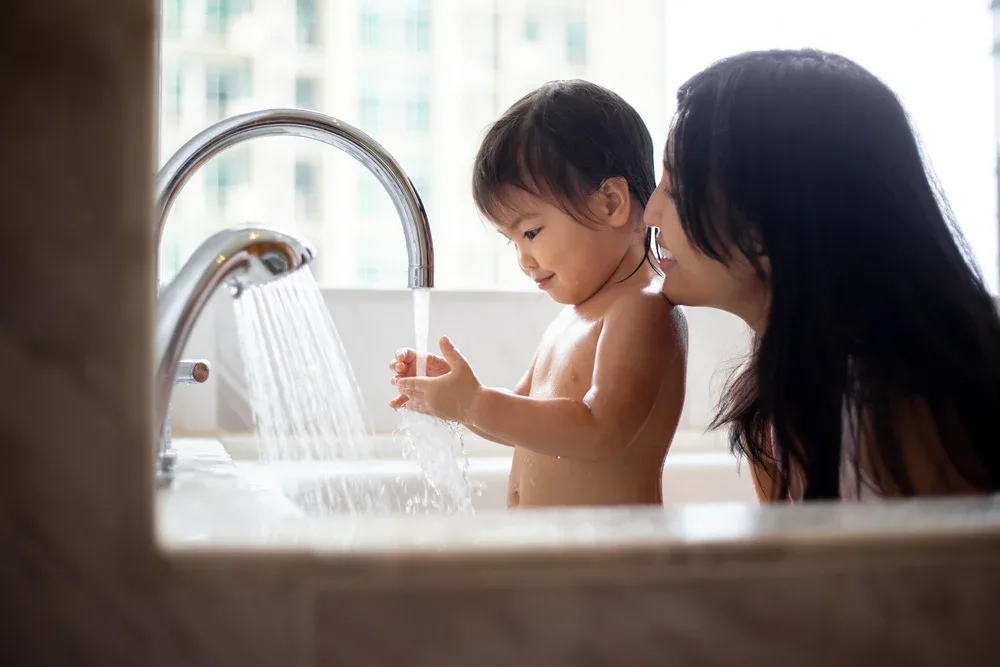
At DeeCyDa Daycare, we understand the importance of sensory activities in a toddler’s early development. Engaging your 13-month-old in sensory play not only provides endless fun but also enhances their cognitive, motor, and social skills. Below, we’ve rounded up our top 10 sensory activities for 13-month-old toddlers. Each activity is designed to stimulate different senses, making learning a multi-sensory experience.
Contents
- 1 Sensory Bins
- 2 Water Play
- 3 Musical Instruments
- 4 Mess-Free Painting
- 5 Bubble Play
- 6 Nature Walks
- 7 Texture Boards
- 8 Playdough Fun
- 9 Scented Play
- 10 Light and Shadow Play
- 11 FAQs
- 11.1 What are the benefits of sensory activities for toddlers?
- 11.2 How often should I engage my toddler in sensory activities?
- 11.3 Are these activities safe for my 13-month-old?
- 11.4 What should I be teaching my 13-month-old?
- 11.5 How to keep a 13-month-old busy?
- 11.6 What are the milestones for a 13-month-old?
- 11.7 How to tire out a 13-month-old?
- 12 Conclusion
Sensory Bins
Sensory bins are a fantastic way to let your toddler explore various textures. Fill a large container with items like rice, beans, sand, or water beads. Add spoons, cups, and small toys for your child to dig and pour with. The different textures and tools will keep them engaged for hours, enhancing their fine motor skills and hand-eye coordination.
To make sensory bins more engaging, you can theme them according to seasons or holidays. For instance, a winter-themed bin might include white rice, small snowflake decorations, and plastic snowmen. A beach-themed bin could have sand, seashells, and toy sea creatures. Themed sensory bins can make the experience even more enjoyable and educational.
Water Play
A splash of water can do wonders! Set up a shallow basin with water and let your toddler play with floating toys, cups, and sponges. You can even add ice cubes for extra fun. This activity is great for fine motor skills and understanding the properties of water.
For an added twist, you can introduce colored water or bubble bath solution to the mix. Using food coloring or child-safe dye, create a rainbow of water options that will fascinate your toddler. Adding a few drops of dish soap can create bubbles that your child will love to play with, turning bath time into a stimulating sensory experience.
Musical Instruments
Introduce your child to different sounds and rhythms with simple musical instruments. Items like shakers, tambourines, and xylophones can be both entertaining and educational, helping develop their auditory senses and hand-eye coordination.
Homemade instruments can also be a hit. Fill empty plastic bottles with different materials like rice, beans, or small pebbles to create shakers. Use pots and pans as drums, and wooden spoons as drumsticks. These DIY instruments can provide endless musical fun and help your toddler discover new sounds and rhythms.
Mess-Free Painting
Mess-free painting can be achieved with a sealed zip-lock bag filled with non-toxic paint. Tape the bag to a table or window and let your toddler squish the paint around. They’ll enjoy the vibrant colors and the tactile experience without any cleanup, and it’s a safe way to avoid potential choking hazards.
For a more interactive experience, use a large sheet of clear plastic wrap taped over a surface and let your child paint on that. This setup allows them to use their fingers and explore the paint directly without the mess. You can also introduce different tools like sponges or brushes to vary the texture and experience.
Bubble Play
Bubbles are magical to toddlers. Blowing bubbles and letting your child chase and pop them can be a delightful sensory activity. It’s perfect for visual tracking, hand-eye coordination, and pure joy.
For more bubble fun, try using different bubble solutions and wands. Giant bubble wands can create larger bubbles that will amaze your toddler. You can also add a few drops of glycerin to your bubble solution to make the bubbles stronger and last longer. Bubble machines are another great option, creating a continuous stream of bubbles for your child to enjoy.
Nature Walks
Take your toddler on a nature walk. Let them touch leaves, smell flowers, and listen to birds. These outdoor experiences can stimulate their senses in a natural, calming environment and introduce them to a variety of textures and sounds.
Enhance the nature walk by collecting items like leaves, rocks, and flowers. When you get home, you can create a nature collage together. This activity not only extends the sensory experience but also helps your toddler develop creativity and fine motor skills as they glue and arrange the natural materials.
Texture Boards
Create a texture board with various materials like fabric, sandpaper, bubble wrap, and cotton balls. Let your toddler feel each one and describe the textures. This activity enhances tactile discrimination and language development while being safe from choking hazards.
To make it more interactive, create a matching game with texture cards. Have pairs of cards with the same textures and let your toddler match them. This not only helps with sensory exploration but also improves memory and cognitive skills as they learn to identify and pair similar textures.
Playdough Fun
Soft, squishy playdough is a hit with toddlers. They can squeeze, roll, and flatten it, which helps with fine motor skills and creativity. You can even make your own play dough at home with flour, water, and food coloring. Just be sure to supervise closely to avoid any choking hazards.
Introduce tools like cookie cutters, rolling pins, and plastic knives to add another layer of fun. You can also incorporate small toys or objects that can be pressed into the play dough to create imprints, adding a visual and tactile element to the play. Homemade scented play dough with a few drops of essential oils can also enhance the sensory experience.
Scented Play
Introduce your toddler to different scents with scented playdough or cotton balls dipped in vanilla, lemon, or peppermint extract. This activity can stimulate their sense of smell and make them more aware of different aromas, adding a new dimension to their sensory play.
For more variety, create a “smell box” with different scented items inside. Use things like herbs, spices, citrus peels, and flowers. Let your child guess the scents and talk about what they smell. This activity not only engages their sense of smell but also encourages language development and curiosity about the world around them.
Light and Shadow Play
Using a flashlight or a small lamp, create shadows on the wall and let your toddler explore them. You can use toys or your hands to make different shapes, teaching them about light and shadows in a fun way. This activity also aids in developing their visual tracking and hand-eye coordination.
To expand on this activity, create a shadow theater with a white sheet and a light source. Use puppets or cut-out shapes to tell a story through shadows. This not only enhances the sensory experience but also fosters imagination and storytelling skills.
FAQs
What are the benefits of sensory activities for toddlers?
Sensory activities enhance cognitive development, fine motor skills, hand-eye coordination, social interactions, and language development. They also encourage curiosity and creativity.
How often should I engage my toddler in sensory activities?
Daily sensory play is beneficial. Aim for at least one sensory activity per day to keep your toddler engaged and learning.
Are these activities safe for my 13-month-old?
Yes, all the activities listed are safe for toddlers, but always supervise your child during play to ensure their safety and avoid any choking hazards.
What should I be teaching my 13-month-old?
At 13 months, focus on teaching simple words, basic motor skills, and social interactions. Encourage exploration through play, reading together, and introducing them to different textures, sounds, and sights.
How to keep a 13-month-old busy?
Keep your toddler busy with a variety of activities like sensory bins, water play, musical instruments, and nature walks. Rotating activities throughout the day can help maintain their interest and engagement.
What are the milestones for a 13-month-old?
Common milestones include walking independently, saying a few words, responding to simple instructions, showing curiosity about objects, and using gestures like pointing.
How to tire out a 13-month-old?
To tire out a 13-month-old, provide plenty of physical activity like crawling, walking, and playing with toys. Engaging in sensory activities and outdoor play can also help expend their energy. Structured playtimes and regular routines also help manage their energy levels effectively.
Conclusion
Sensory activities are a cornerstone of early childhood development, offering endless opportunities for learning and exploration. At DeeCyDa Daycare, we incorporate these activities into our infant program to ensure your child gets a balanced and enriching experience. By engaging their senses, we help toddlers build crucial skills in a playful, nurturing environment.
For more information about our infant program and the activities we offer, visit our DeeCyDa Daycare Infant Program page. We’re dedicated to providing the best care and education for your little ones. Contact us now!

